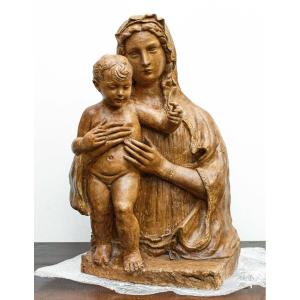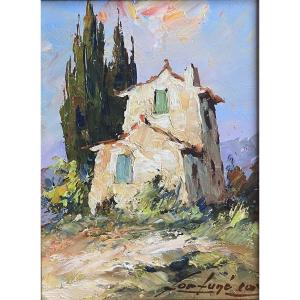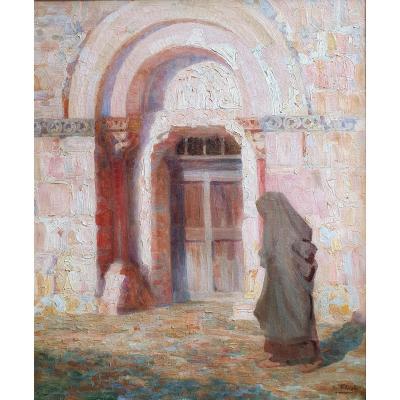View of the Rialto Bridge
Oil on canvas, cm 37 x 49 - with frame cm 43 x 56
Signed "G. Bonomi" at bottom right
The genre of Venetian landscape painting developed in the early eighteenth century, coinciding with the increasing turnout of those, among scholars and foreign artists, had wished to bring home a memory of the wonders of the lagoon. The pioneering production of Canaletto before and the affirmation of the positive use of scientific means such as the optical camera produced a solid affirmation of the Venetian landscapes, which began to depopulate throughout Italy. In the 19th century several artistic currents recalling romanticism, vedutisms and historicisms started in the previous century also supported the preferential role to be given to lagoon paintings.
The present offers a romantic view of the Grand Canal with the Rialto Bridge, taken in the calm of a quiet Venetian evening. The construction of the bridge dates back, in the design, to the Middle Ages: as reported by Lorenzetti (Guide of Venice) since 1172 the doge Sebastiano Ziani proposed the idea of joining the two opposite banks of the canal by a bridge of boats; Nicolò Baratieri granted this wish in 1181, with the so-called Quartarolo bridge, from the name of the coin that beat the toll, or of the coin, because of its proximity to the premises of the Mint. The randomness of the bridge of boats was replaced in the thirteenth century by a solid wooden structure, rebuilt several times during the following centuries; it offers meticulous evidence of the Miracle of the Cross at the Rialto Bridge of Vittore Carpaccio (Venice, Gallerie dell'Accademia, 1496 ca.). . The bridge was later named after the Rivoalto market that took place there. The need for continuous maintenance of the wooden skeleton, however, led the Council to decide on a call for the design and construction of a replacement stone: the race, launched in 1554, took part Giacomo Barozzi from Vignola, Palladio and the Sansovino. The project of the Venetian Antonio da Ponte was ordered: the construction, begun in 1588, ended in 1592.
Giovanni Bonomi, artist of the present painting, devoted himself mainly to genre painting and to the most coloristically vivid Venetian vedutism, as happens in the present. Oriundo of the lagoon city, Bonomi met with national favor by exhibiting in Rome in 1883 with Costumi of 1700; the exhibition experience was then repeated in 1887 at the Venetian national exhibition with Abbazia, Cattiverie di guerra and San Marco.
The object is in good condition
With Ars Antiqua you can defer all amounts up to a maximum of € 7,500 at ZERO RATE, for a total of 15 INSTALLMENTS.
Ex. Tot. € 4,500 = Monthly installment € 300 for 15 months.
Ex. Tot. € 3,600 = Monthly installment € 720 for 5 months.
For amounts over €7,500 or for a longer grace period (over 15 installments), we can provide a custom payment.
Contact us directly to get the best quote.
LIVE TV
- SUNDAY 17.00 - 21.00 Dig.terr. 126 + 809 SKY
- THURSDAY 21.00 - 24.00 Dig.terr. 134 + 809 SKY
- Streaming on our website www.arsantiquasrl.com and on our social networks Facebook and Youtube
All the works proposed by Ars Antiqua are sold accompanied by a certificate of authenticity in accordance with the law and accurate fact sheet.
You can see the works directly at the showroom gallery in Milan, in via Pisacane 55 and 57.
We personally organize transport and deliveries of the works, both for Italy and abroad.














































 Le Magazine de PROANTIC
Le Magazine de PROANTIC TRÉSORS Magazine
TRÉSORS Magazine Rivista Artiquariato
Rivista Artiquariato